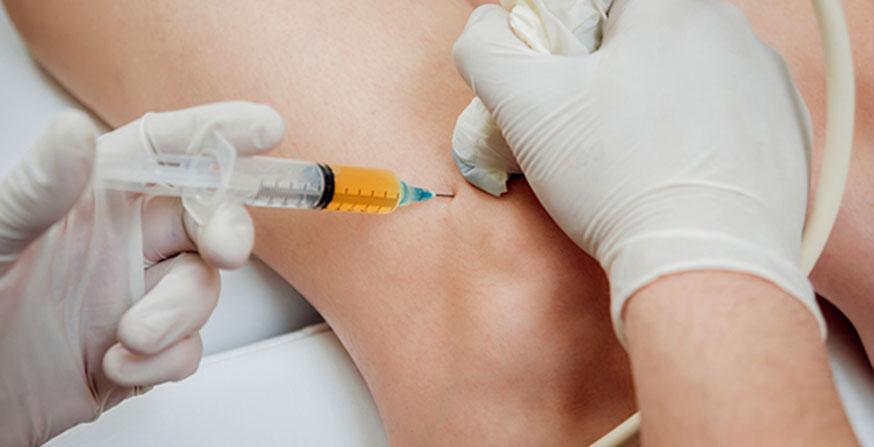Varicocele is a common condition that affects many men, often leading to discomfort and potential fertility issues. This guide will explore various varicocele treatment options, helping you understand the best approaches to manage and alleviate this condition. Flowcare provides insights into modern and effective treatments that can improve your quality of life.
Understanding Varicocele
A varicocele is an enlargement of the veins within the scrotum, similar to varicose veins that can occur in the legs. This condition is caused by the malfunction of valves within the veins, leading to blood pooling and vein enlargement. Varicoceles are most commonly found on the left side of the scrotum and can be asymptomatic or cause symptoms such as pain, swelling, and infertility.
Symptoms of Varicocele
Varicoceles often do not present any noticeable symptoms and are discovered during a routine physical exam or when investigating infertility. However, when symptoms do occur, they may include:
- Dull, aching pain in the scrotum
- Feeling of heaviness or dragging in the testicles
- Visible or palpable enlarged veins
- Discomfort that worsens with prolonged standing or physical activity
- Shrinking of the affected testicle
Diagnosing Varicocele
Diagnosis of a varicocele typically involves a physical examination, where the doctor will feel for enlarged veins in the scrotum while the patient is standing and lying down. If the physical exam is inconclusive, an ultrasound may be used to visualize the veins and confirm the diagnosis.
Non-Surgical Varicocele Treatment Options
-
Lifestyle Modifications
- Wearing Supportive Underwear: Tight-fitting underwear or athletic supporters can help alleviate discomfort by providing support to the scrotum.
- Avoiding Prolonged Standing or Strenuous Activity: Reducing activities that increase abdominal pressure can help manage symptoms.
-
Medications
- Pain Relievers: Over-the-counter pain medications like ibuprofen or acetaminophen can help reduce pain and inflammation associated with varicoceles.
-
Embolization
- Minimally Invasive Procedure: Embolization involves inserting a catheter into a vein in the groin or neck and using coils or a sclerosing agent to block the affected veins. This procedure is performed under local anesthesia and has a shorter recovery time compared to surgery.
Surgical Varicocele Treatment Options
-
Varicocelectomy
- Microsurgical Varicocelectomy: This procedure involves making a small incision in the lower abdomen and using a microscope to locate and ligate the affected veins. It is the most common surgical treatment for varicoceles and has a high success rate.
- Laparoscopic Varicocelectomy: A laparoscope is inserted through small incisions in the abdomen to visualize and treat the varicocele. This technique allows for quicker recovery and less postoperative pain.
-
Open Surgery
- Open Inguinal or Subinguinal Varicocelectomy: This traditional surgical approach involves making an incision in the groin to access and tie off the affected veins. It is effective but may have a longer recovery period compared to minimally invasive techniques.
Post-Treatment Care and Recovery
After varicocele treatment, it is essential to follow your doctor’s instructions for optimal recovery. Common post-treatment recommendations include:
- Rest and Avoid Strenuous Activities: Allow time for your body to heal by avoiding heavy lifting and strenuous activities for a few weeks.
- Manage Pain: Use prescribed pain medications or over-the-counter pain relievers to manage discomfort during recovery.
- Follow-Up Appointments: Attend all scheduled follow-up appointments to monitor healing and ensure the treatment was successful.
Potential Complications and Risks
While varicocele treatments are generally safe, there are potential risks and complications to be aware of:
- Infection: Any surgical procedure carries a risk of infection. Proper wound care and following your doctor’s advice can minimize this risk.
- Recurrence: There is a possibility of varicoceles recurring after treatment, requiring further intervention.
- Hydrocele Formation: Some patients may develop a hydrocele (fluid accumulation around the testicle) after surgery, which may require additional treatment.
Impact of Varicocele Treatment on Fertility
One of the primary reasons for seeking varicocele treatment is its potential impact on fertility. Varicoceles can affect sperm production and quality, leading to infertility. Studies have shown that varicocele treatment, particularly surgical options, can improve sperm parameters and increase the chances of successful conception. However, the degree of improvement varies among individuals.
Choosing the Right Varicocele Treatment
Selecting the most appropriate varicocele treatment depends on several factors, including the severity of symptoms, impact on fertility, and patient preference. Consulting with a healthcare professional is crucial to determine the best course of action tailored to your specific needs.
Advances in Varicocele Treatment
Flowcare highlights the latest advancements in varicocele treatment, emphasizing minimally invasive techniques that offer quicker recovery times and fewer complications. Innovations such as robotic-assisted surgery and improved embolization materials continue to enhance the effectiveness and safety of varicocele treatments.
Conclusion
Varicocele treatment options range from lifestyle modifications and medications to minimally invasive procedures and surgery. Each approach has its benefits and risks, and the choice of treatment should be made in consultation with a healthcare professional. Flowcare remains committed to providing up-to-date information and resources to help individuals make informed decisions about their health.

